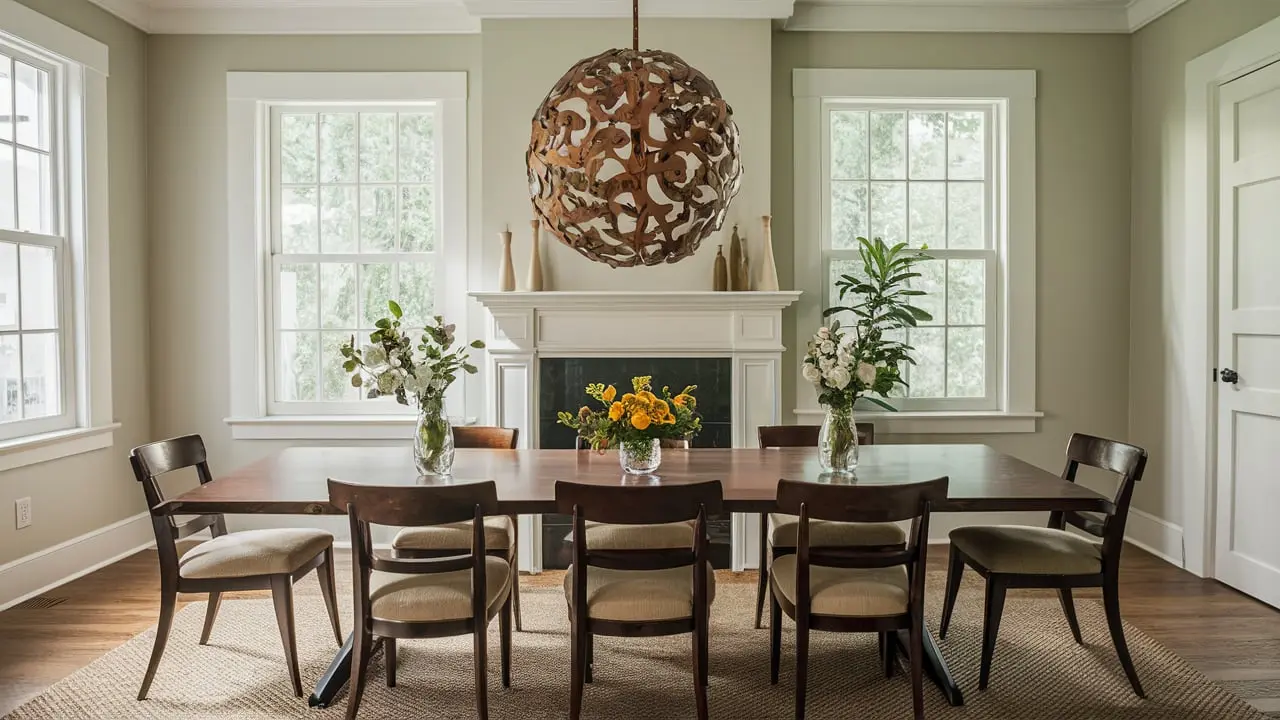Tables come in various shapes and sizes, each serving a unique purpose in your home. Unique coffee tables are perfect for living rooms, offering a place to set down drinks, display books, or even showcase a beautiful vase. Dining tables are the anchor of the dining room, hosting meals and family gatherings and sometimes acting as an impromptu office for work or homework. Side tables, often overlooked, provide additional surface space and storage in bedrooms, living areas, and even hallways. Think about the functionality you need from each table type to make the best choice for your space.
The versatility of tables extends beyond just their functional use; they also serve as pivotal design elements. A beautiful dining table with intricate designs or unique materials can become a focal point in your dining area, while a distinct coffee table can elevate the living room’s ambiance. To further aid in your selection, consult a comprehensive dining table guide that provides detailed insights into making an informed decision.
Choosing the Right Material
The material of your table impacts both its aesthetics and durability. Wood is a classic choice for its warmth, versatility, and the ability to blend in with various decor styles, from rustic to modern. Different types of wood, such as oak, walnut, and cherry, offer distinct grains and colors that can dramatically alter the look and feel of your room. Glass tables bring a modern touch, creating a sense of space and light, ideal for smaller rooms or contemporary homes, but they do require more maintenance to avoid fingerprints and smudges. Metal and marble tables are also popular choices for their durability and stylish appearance; metal adds an industrial vibe, while marble offers a luxurious feel. When choosing a material, it’s essential to consider your aesthetic preferences and lifestyle and how much maintenance you’re willing to undertake.
Wooden Tables
Wooden tables are timeless pieces that can suit various styles. They are incredibly durable and can be refinished to extend their lifespan, making them a popular choice for dining tables where durability and longevity are key. The types of wood used in table-making offer different textures, colors, and grains, which can significantly impact your dining room’s ambiance. Additionally, wooden tables can be intricately carved or decorated to offer a touch of rustic charm or elegance.
Glass Tables
Glass tables create a sense of space and light, making them an excellent choice for small rooms or modern interiors. They’re relatively easy to clean but require frequent wiping to maintain their pristine appearance. The transparency of glass tables helps them fit into different styles seamlessly without making the room feel cluttered. However, they are more susceptible to scratches and must be handled with care, especially in homes with children.
Matching Your Decor
A well-chosen table can elevate the look of your space. For a rustic feel, wooden tables with natural finishes and visible grain patterns are ideal. These kinds of tables give your house a warm, inviting vibe by adding texture and warmth. Modern homes may benefit from sleek glass or metal tables, which offer clean lines and a minimalist aesthetic. If your space leans toward the eclectic, don’t be afraid to mix and match materials and styles—metal legs with a wooden top, for example, can create an interesting contrast. The key is to create a cohesive look that complements your room’s color palette and overall design without overwhelming the space.
For example, a farmhouse-style dining room could benefit from a robust wooden table that still looks elegant and charming. On the other hand, an urban loft might look fantastic with a glass or metal piece that adds to the industrial vibe. Think about what complements your existing furniture and the overall atmosphere you aim to create. Whether it’s a sophisticated glass table or a rugged wooden one, the goal is to find a piece that harmonizes with the rest of your decor.
Consider Size and Functionality
Before purchasing a table, measure your space to ensure it will fit comfortably. A table that’s too large can overwhelm a room, making it feel cramped and cluttered, while one that’s too small may look out of place and fail to meet your functional needs. Measure the length and width of your room, and remember to factor in space for chairs and the ability to walk around the table. A good rule of thumb is to leave at least three feet of space on all sides for easy movement. Think about functionality as well. A dining table with extendable leaves is great for hosting guests, while a multi-tiered coffee table can offer additional storage for remotes, magazines, or knick-knacks. Prioritize your needs, whether it’s hosting large dinner parties or having a flexible workspace, and find a table that meets them.
Room Size
Consider room dimensions carefully before choosing a table. Use tape to mark potential table sizes on the floor to visualize their appearance in your space. Ensure there’s enough clearance around the table to move chairs freely without bumping into walls or other furniture. It’s also helpful to consider how the table fits with other elements in the room, such as rugs, lighting, and other furniture pieces. For instance, a round table might fit better in a smaller dining area, whereas a rectangular table could work well in a larger space.
Functionality
Think about how you use the space. Tables that offer storage solutions, like drawers or lower shelves, can help keep a room tidy and free of clutter. Expandable or adjustable tables provide versatility for a range of events, including intimate family meals and bigger get-togethers. When space is limited, such as in smaller homes or apartments, multipurpose tables can be especially helpful. For example, a coffee table with concealed storage can serve as a feature piece in your living area as well as a place to stash stuff away.



